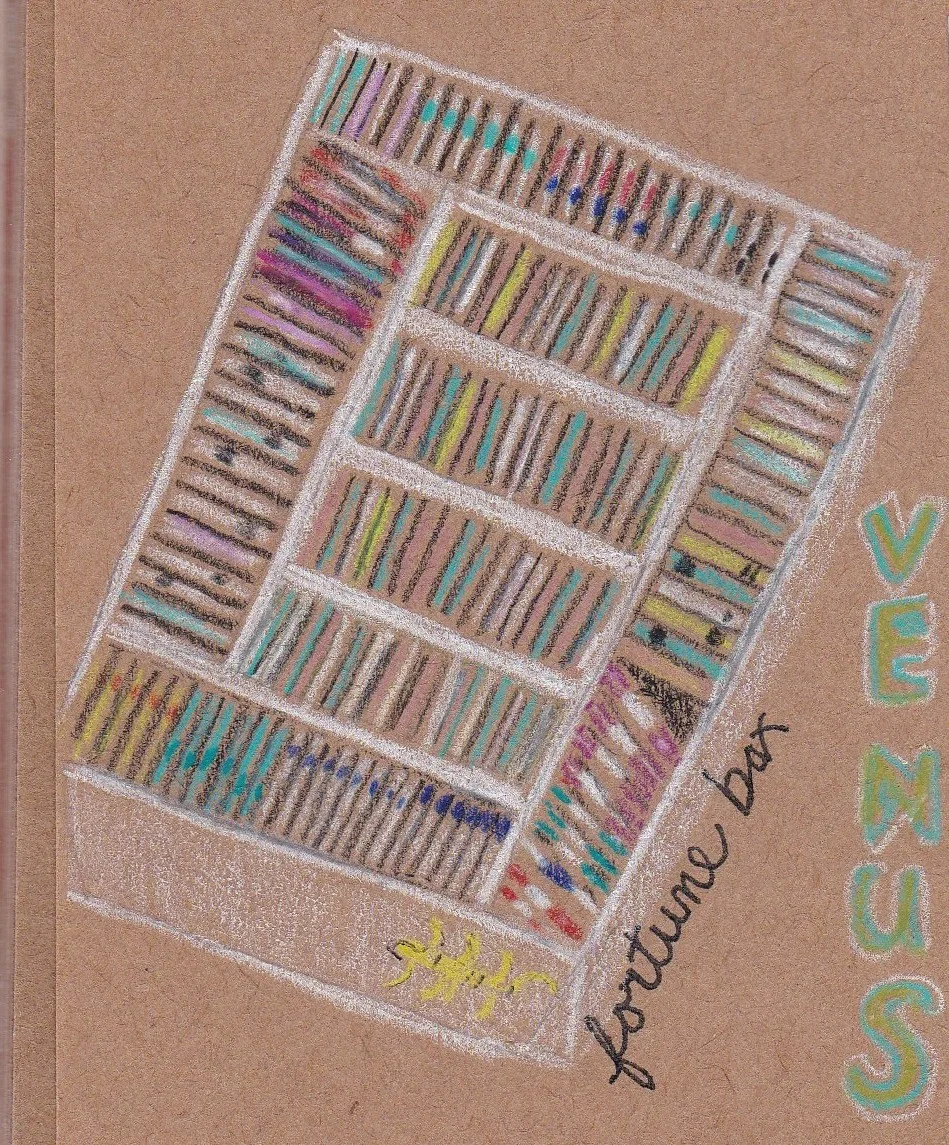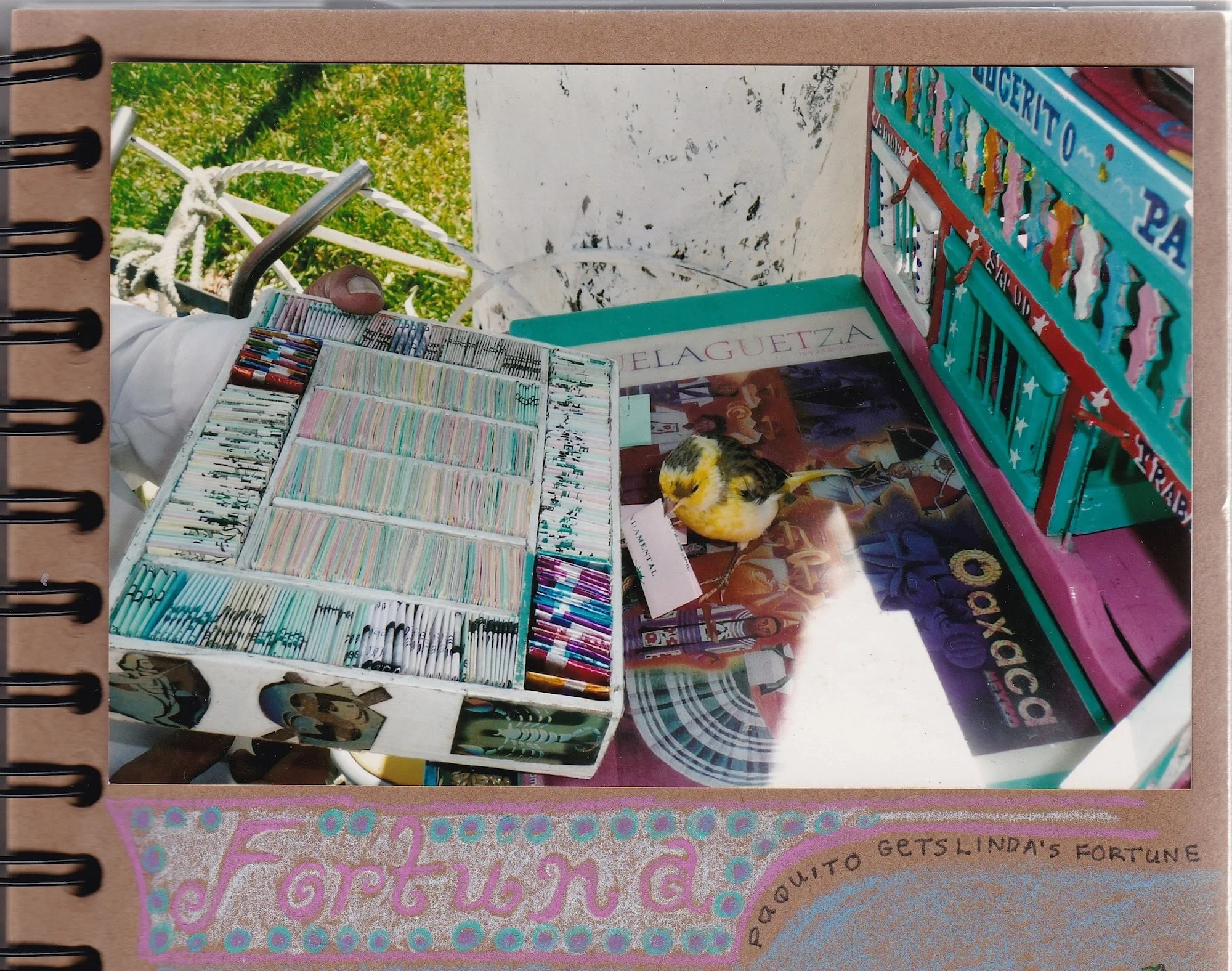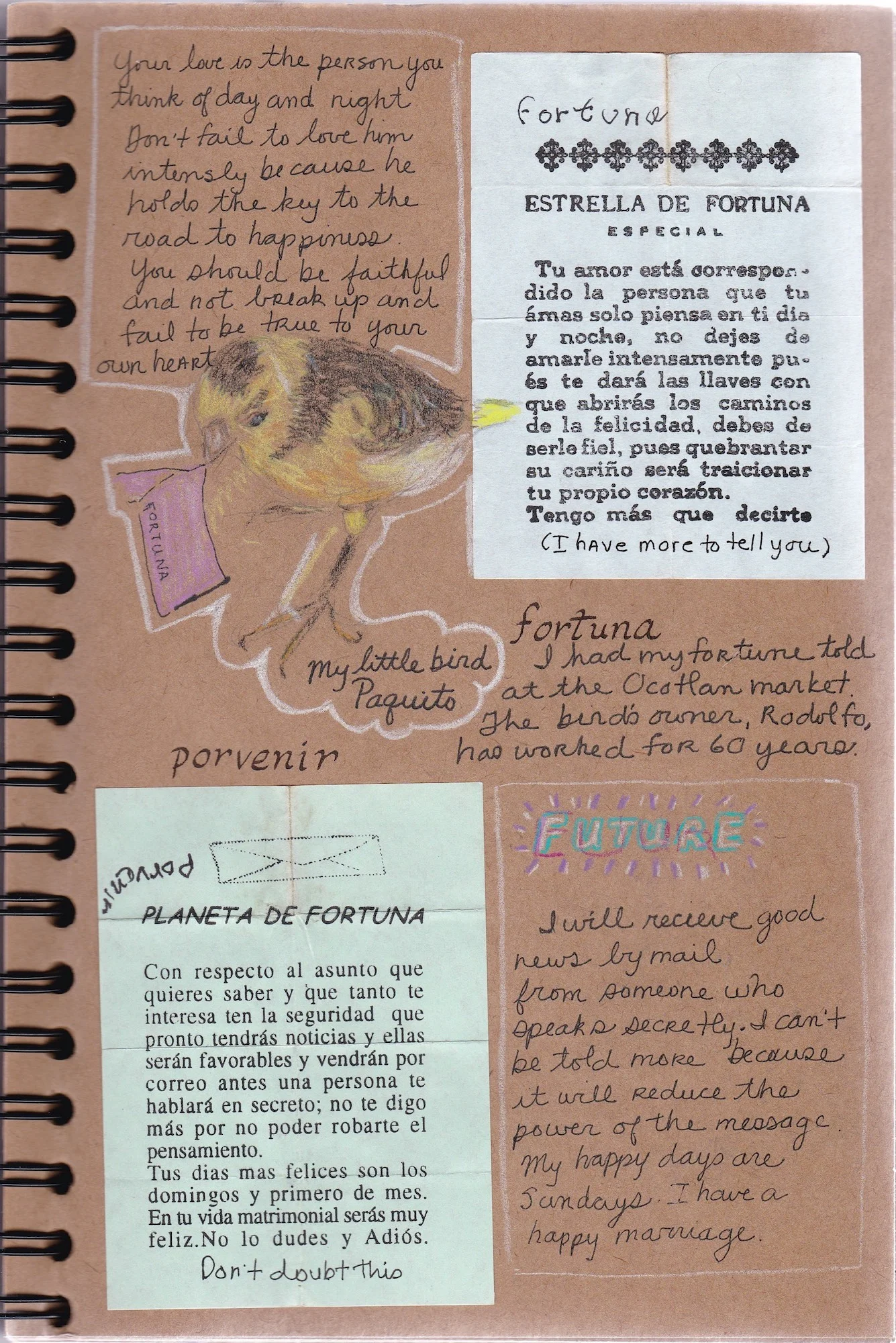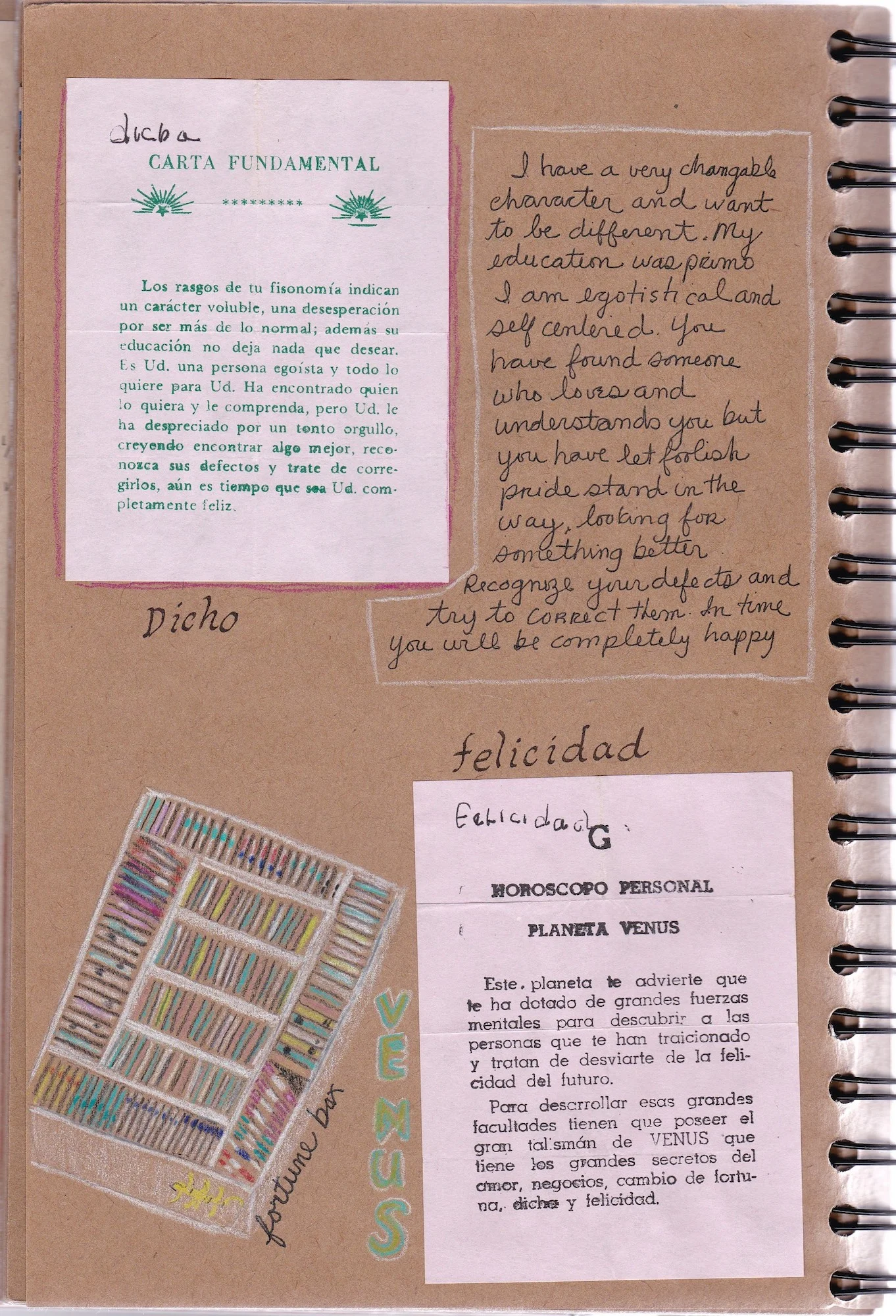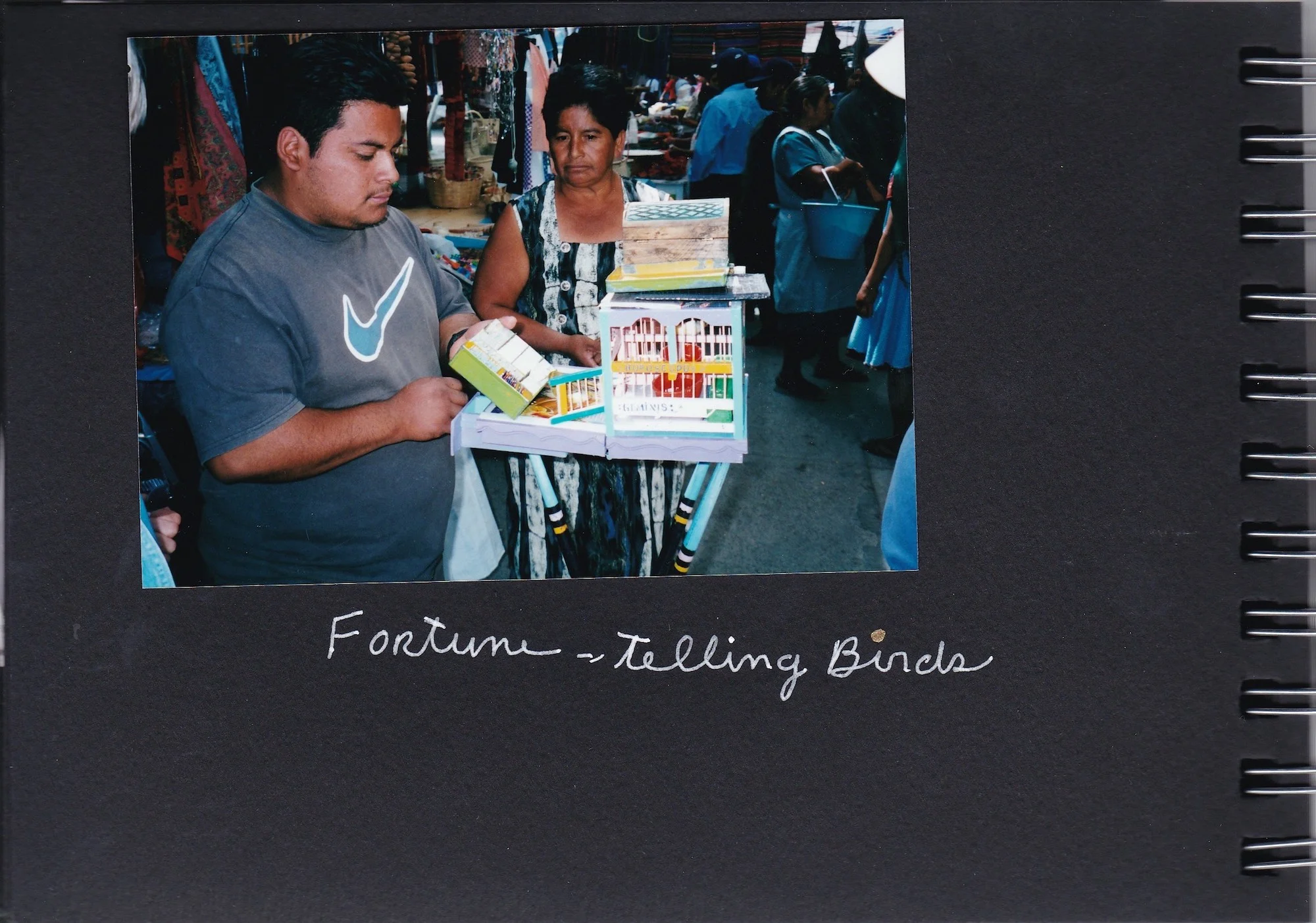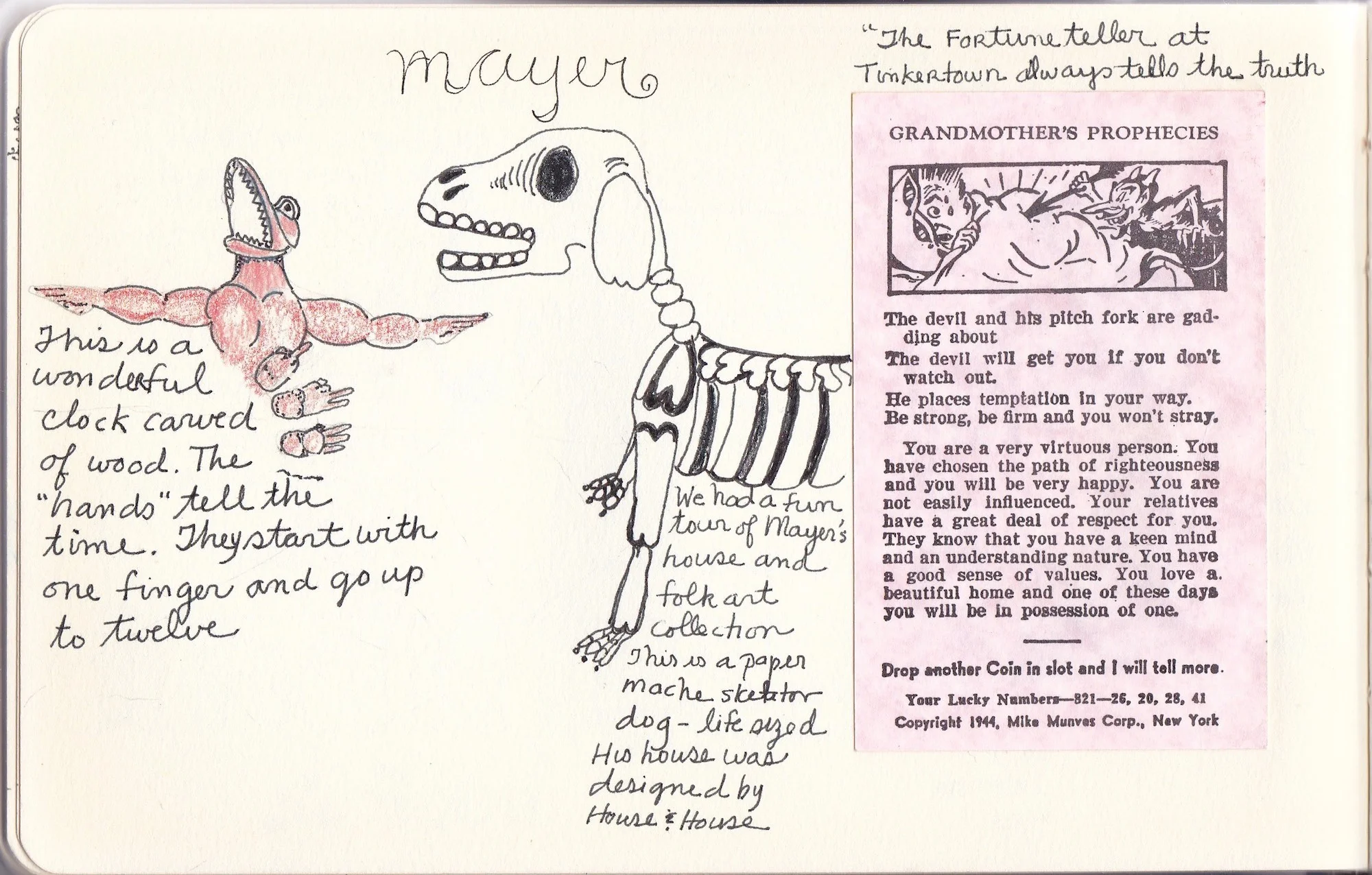6. Bird of Fortune
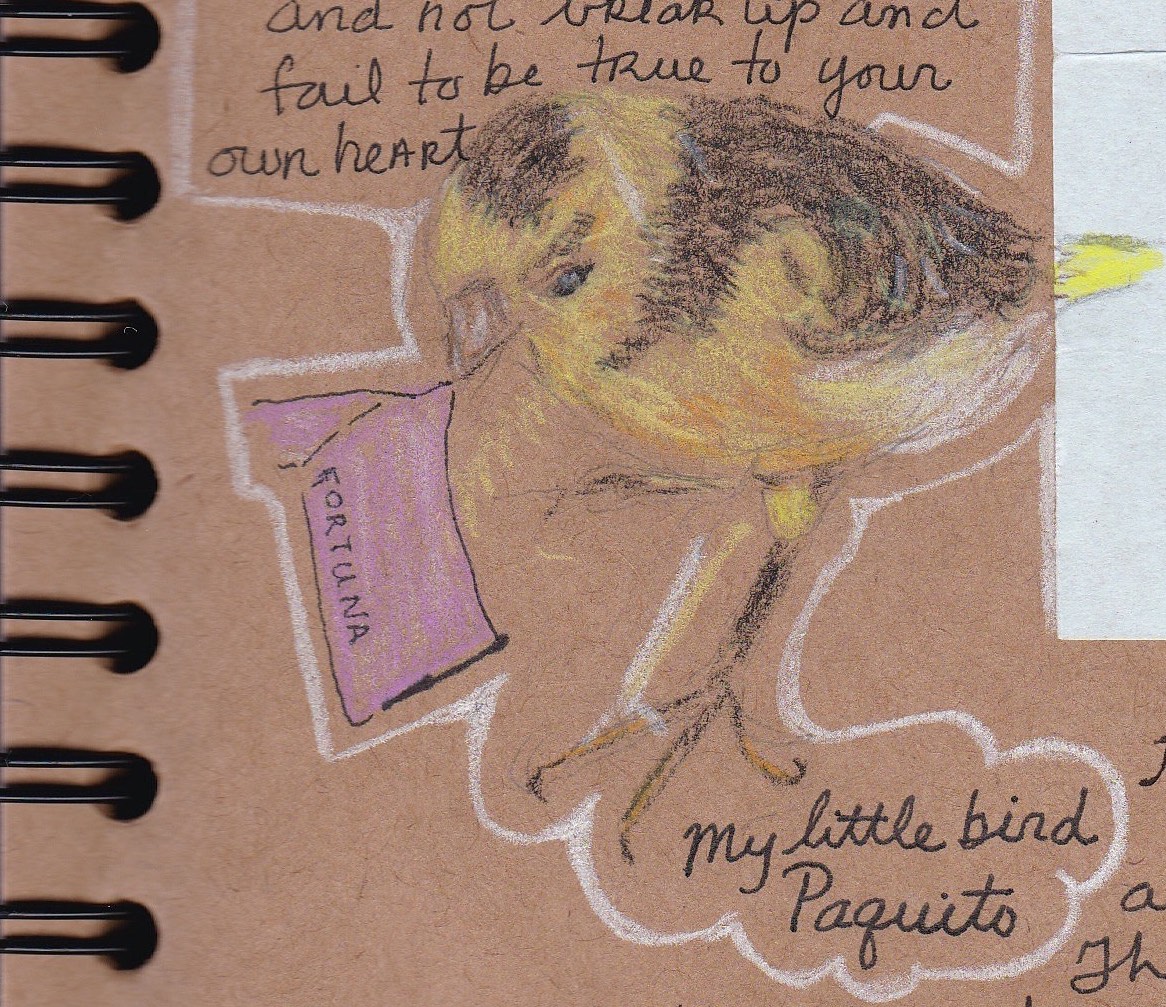
Bird of Fortune
Sweat runs down the backs of my legs as my husband and I edge our way down the narrow aisles of the Abastos Market in Oaxaca City. I lug our market bag, which holds tiny Mexican limes, a flat earthenware cooking plate called a comal, and a jar of honey purchased from a man who pulled a small wagon with a honeycomb dripping gold suspended above the bed. My husband and I flatten ourselves against the wooden stalls to let carts laden with boxes of tomatoes, sacks of corn, and bundles of flowers pass by. It is leaning towards hot, and, after two hours, we have tired of the “¿Qué quiere llevar?” question. What do you want to take with you?
We head towards the light at the end of the flower aisle and emerge into the full sun on the east side of the market. As we approach an overpass that spans the busy street, I spy a man, an island in the stream of shoppers that flow around him, standing next to a table that holds a birdcage. He is slight of build with gray hair and a neatly trimmed white mustache, and he wears a white and red pinstripe shirt and black pants. He is a Mexican fortuneteller who coaxes his little birds to foretell your destiny, los pájaros de la fortuna, the birds of fortune.
In my years of travel, I can never resist the opportunity to try my luck and to see the tiny birds perform. Now, with a world grappling over weighty questions about the future, I am ready to let the meek and gentle again take a shot at telling mine. So I drag my husband forward into the sweep of human traffic.
His table is just big enough for his birds and his box of fortunes. The cage is brightly painted in primary colors. The words Scorpio, Virgo, Acuario, the signs of the zodiac, are lettered in yellow around the top edge. Their home is divided into three tiny rooms with the names of his canaries printed above the doors. Pepito (Little Joe), Lucerito (Little Light), and Piolin (Little Tweeter or Tweety Bird) looked out expectantly from between the blue bars.
“Tres fortunas para diez pesos, una ganga,” announces the birdman. Three fortunes for a dollar, a bargain. He tells us he has worked at his trade for forty years. We pay our pesos and he opens the latch to the yellow door on the right. Out strides Pepito, cocking his head and hopping down to the tabletop. He looks sleek and well-fed, his eyes bright like glass beads. His body is covered with pale yellow feathers with brownish patches on his head, chest and tail. He makes a beeline for the open box that holds the folded fortunes, bobbing down to pop out a blue paper, which he flings onto the tabletop. Then he plucks out a purple, and then a yellow packet, ignoring the shiny gold foil ones. He pauses and looks up at his master.
“El trabaja para grano, yo para pesos.” He works for grain, I work for coins, jokes the merchant as he flips a piece of grain onto the tabletop. Our feathered messenger gobbles his wages, then heads back to the cage and hops up to his perch. We say our goodbyes, and walk home through the afternoon crowds and hazy heat of this tropical February day.
When we reach our apartment, I sit beneath the fan, unfolding the small packets of thin tissue paper. The printing is faint and I struggle with the stilted Spanish: “Estrella de tu Vida.” Yours will be a long life. Many hardships will come to you. I skim further for any amazing predictions. None. But the experience was well worth ten pesos. Pepito served us well.
During a later trip to Oaxaca, it was an experience of another kind. We stopped for the birds of fortune at the weekly market in Tlacolula, a town southwest of the city. A rotund young man in a gray tee shirt with a blue Nike swipe on the front stood next to a small cage painted in pastel colors. He had quite a panza, or beer belly, possibly attesting to the success of his business.
The hand-lettered word, Horóscopos, painted on the horizontal bars of the cage advertised his craft. After we agreed on ten pesos for the fortunes, he opened the cage door and Carita or Little Dear One, another yellow canary, headed to the box and went into high gear. One, two, three, on and on, she kept pulling paper packets out until she had quite a pile in front of her. We suddenly realized that the price was ten pesos for each fortune, a fortune of another kind. “Alto, alto, bastante, bastante, stop, enough!” we pleaded. We finally got our slick friend to stop the raging canary.
“Senor Nike” neatly stacked the fortunes, counting by tens: “Diez, veinte, treinta……cien.” One hundred pesos, almost ten dollars worth of future. Unwilling to support the scam, we picked up the top five papers, gave the frowning young man his fifty pesos and left, a little wiser. “Little Dear One” still did quite well for her master.
To many Mexicans, the birds provide more than a novel experience. For a well-known woodcarver in the Oaxaca Valley, a meeting with the little birds changed his life. We first met Manuel three decades ago. He was one of the original carvers of the little painted folk art animals that have become internationally famous. He inspired a carving industry in his town that spread to several other villages in the valley. Fame and increasing fortune extracted a price, however, and he became an alcoholic.
We avoided visiting his shop for a number of years because it made us sad to see his life in decline, but several years ago, we took a chance and returned to his home. We found him in his workshop, surrounded by cedar shavings and partially completed animal-like creatures he calls “alebrijes.” He had aged and his body showed the result of years of hard living, but there was a light in his eyes and he gave us a wide grin when we asked him how he was doing. He told us of a spiritual awakening that had stopped his self-destructive habits.
“It was a little bird I encountered at the market,” he said. “He told my fortune, told me that I was to serve using my head and my hands.” A spiritual revelation delivered by the little Pájaro de la Fortuna helped him to transform his life.
I will always stop for the little birds in the markets of Mexico. Whether servants of the faithful or predators of the gullible, they are an authentic part of Mexican culture. They connect me with a people who can find strength in the little things.
* * *
Planeta de Fortuna Especial
It is traditional for a person that doesn’t have suspicions; you have something to think about but everything seems like it will be good. You have adversity but in exchange, you will be lucky more than before. You have some troubles that bother you but they will pass, very soon you will have prosperity, you will receive new things that will be good to have, you will live many years. Try to enter contests, buy lottery tickets, choosing the numbers that end in 9 and 5.
Announcement of Your Future
Your future is marked by a path of happiness, but there will be obstacles that are interposed and you have to conquer them to arrive at a realization. It will be vexing that if you do not endure, you will be fatally disillusioned, will have certain ruin and lose all.
Star of Your Life
All of the undertakings of your life are subject to the rhythms of your star. All are influenced by the planets of the day of your birth. Don’t leave for later that this law exists and because of this, everything we have to begin: seconds, hours, days, weeks, months, and favorable years. You are interested in learning more.
* * *
Gallery
Click on an image to enlarge…
All Content Copyright ©2020 Linda Oman | All Rights Reserved

